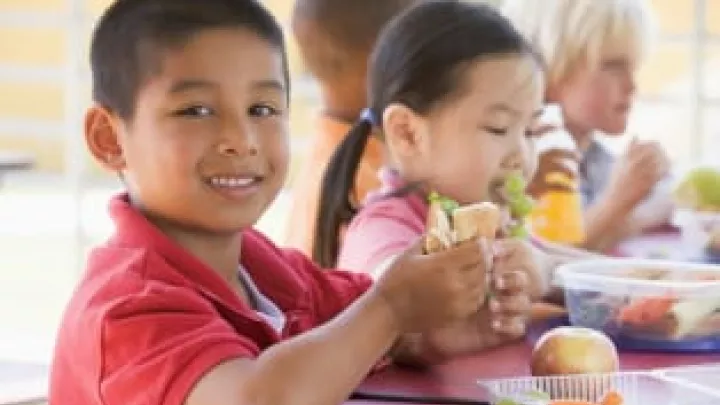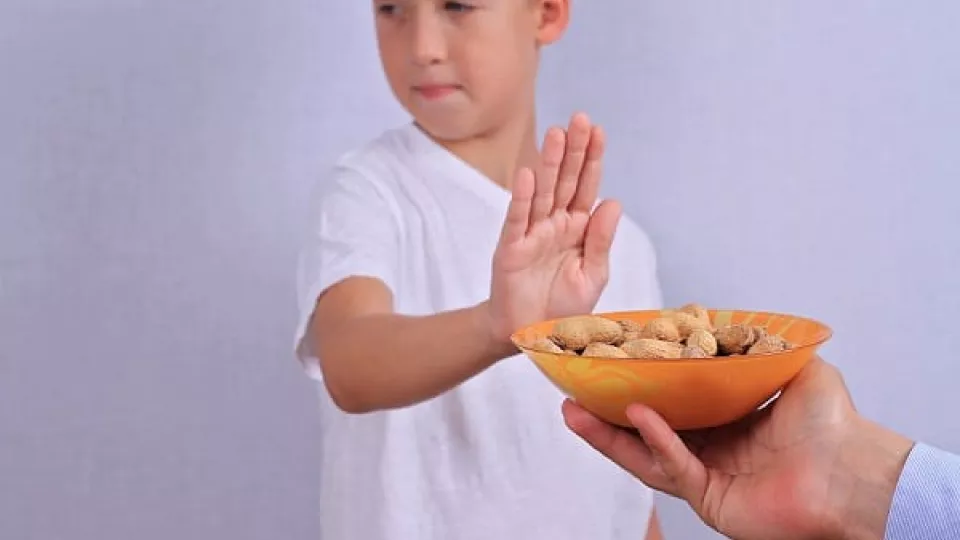
Raising a Child with Food Allergies
Adventure Equals Allergy
My seven-year-old, Jojo, self-diagnosed a few years ago, declaring himself allergic to fruits, vegetables and almost anything green, except for Kermit. (No, he does not eat frogs.)
So, you can imagine my delight when he picked up some pistachios left over by grandma one Friday and asked me, "Are these good for you?"
My enthusiastic answer was, "Absolutely!" I was intrigued to watch him finish the entire bag of nuts, after his careful examination of their light green flesh.
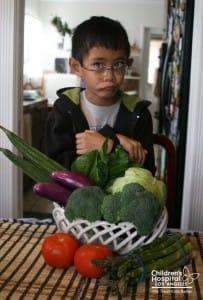
Prior to this experience, Jojo would always make sure to check his plate for any speck of green, which he would meticulously move to the side of his plate with his fork.
The two bags of pistachios I brought home from the local market the following day did not last long in our house. This kicked off days of adventure for Jojo's palate and he was trying tons of new foods until he happened to try some ginger snaps and cinnamon rolls from a nearby bakery. On Wednesday evening I noticed pinpoint rashes and some hives covering his chest and back!
I checked him from head to toe, looking for any swelling on his face, particularly around his eyes, lips, tongue, and neck. Putting on my nurse cap, I asked a few questions:
"Are you itchy?"
"No."
"Have you been scratching?"
"No."
Despite his answers, it still looked to me like my son was experiencing an allergic reaction. I gave him over-the-counter chewable antihistamine on hand, following the directions on the container and put him to bed. He slept soundly that night.
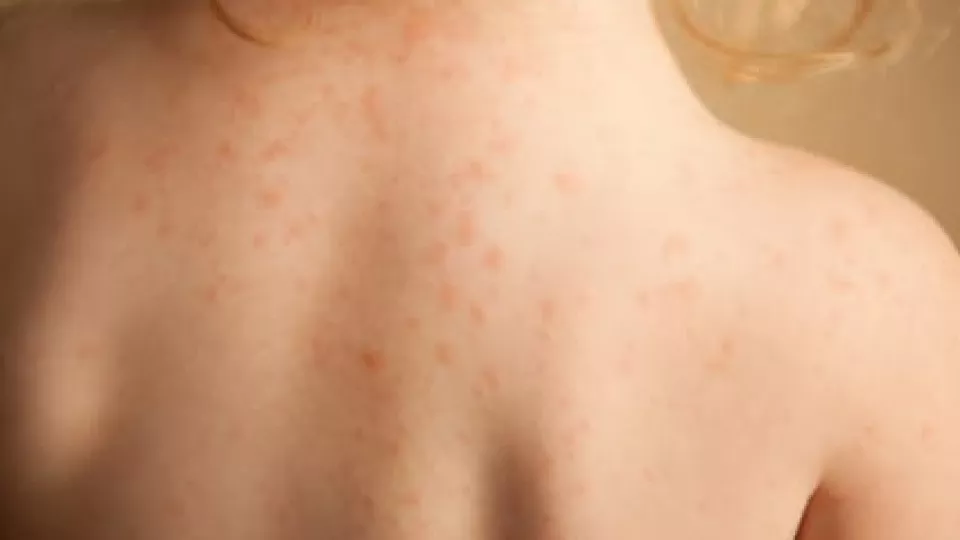
By the morning, his hives were gone, but the rash was still there. I called Jojo's pediatrician, who could only give me an afternoon appointment.
I was given the choice to come in early and wait to be seen, but I knew I could end up waiting hours without an appointment, so off to school he went, sadly with a much leaner lunch box than normal. I didn't want to take any chances.
How Do I Know if My Child is Having an Allergic Reaction?
Finding a rash on a family member can be alarming. Without knowing what is causing the rash, parents often immediately wonder whether their child’s rash is contagious before they think of allergies as the cause.
In Jojo's case, it was easy to suspect he was experiencing an allergic reaction because we distinctly remembered new items introduced into his diet just before he broke out in a rash.
In addition, no one else in the family had the same rash, which led me to believe it wasn't contagious. However, we continued to watch each other to rule out this possibility.
Checking for Allergies
Here are some immediate steps you can take when you suspect allergies:
- Check for any difficulty in breathing
- If the child starts feeling a lump in the throat, any shortness of breath or wheezing, CALL 911.
- Watch for other symptoms, which can include:
- Runny or stuffy nose
- Sneezing
- Itchy, watery eyes
- Facial swelling, around the eyes and lips
- Swelling of the tongue and throat
- Recall and list any new food, hair and skin care product (shampoo, conditioner, lotions or cream). Don’t forget to include soaps (bath or detergent).
- Recall and list any changes in products or foods you usually encounter in your home or environment. (In Jojo’s case, we had recently purchased products with ginger and cinnamon from a bakery that was new to us.)
Oral Antihistamines
Oral antihistamines such as dipenhydramine (Benadryl) can be given to ease mild symptoms of allergies. However, they can often cause drowsiness and inability to concentrate in school. Other non-drowsy antihistamines that provide temporary relief are available such as loratadine (Claritin) and ceitirizine (Zyrtec).
Upon determining food and products to which a child is allergic, it's important to keep a list of things to avoid.
Keeping an Allergy Diary
I prepared for my son's appointment with his pediatrician by writing out a diary of the previous days, listing any new foods my son had eaten during that time, what he didn't eat, as well as my observations during that time.
It helped me to present my son's pediatrician with the most accurate picture of the days prior to the rash.
Here's how it ended up looking:
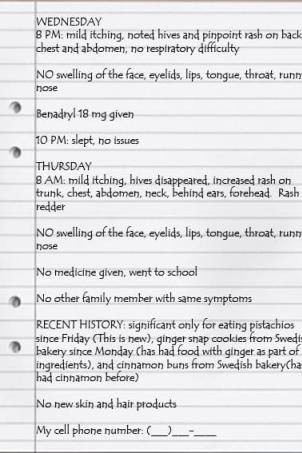
This diary was a very useful tool to help me figure out what foods specifically caused my son's rash. While I have the benefit of education and training as a nurse to help guide me, parents can also use a diary when trying to narrow down which foods might be causing their child to have an allergic reaction.
Coming prepared to a doctor's appointment with this information will help your child's pediatrician during the diagnosis process.
A Pause from Pistachios
… and other things. The pediatrician told Jojo that for at least two weeks, he was not allowed to eat the three things he had most recently added to his diet:
- Pistachios
- Ginger snaps
- Cinnamon rolls
To determine which of the three had caused the reaction, we had to reintroduce each one at a time.(which one was the culprit?).
Our Children's Hospital allergy specialist shared with me that, particularly in the case of nut allergies, reintroduction can be especially dangerous and he would not recommend this approach in the future.
Additional added April 6, 2011
Jojo also had to take oral steroids for four days and was prescribed hydrocortisone to rub onto the areas of his skin where he experienced severe itching.
Additionally, I sent his teacher a note about the incident. I made sure to inform her about what food items caused the allergy, so that she would be aware in case they were included in any school snacks or treats brought to class from home by other students.
Sharing Your Child's Allergy Information
It's very important to make sure that a complete listing of your child's food allergies is shared with as many people as possible. Sharing this information with all the members of the household, the teacher, and friends or relatives who might feed your child will help minimize risk of exposure to the foods in question.
There is no definitive list of safe foods as allergies can be as unique as individuals are. However, here are some useful links for parents hoping to find foods that are free of the item to which their child is allergic.
At Our Hospital
At Children's Hospital Los Angeles, the Division of Clinical Immunology and Allergy combines treatment, research, education and outreach in the care of children with severe allergic disease. Often, they are called upon to help children for whom standard allergy protocols simply aren’t enough to keep them allergic reaction-free.
Other Allergy Resources
Best Food Allergy Sites
http://www.bestallergysites.com
This site focuses on resources for a wide variety of food allergies.


